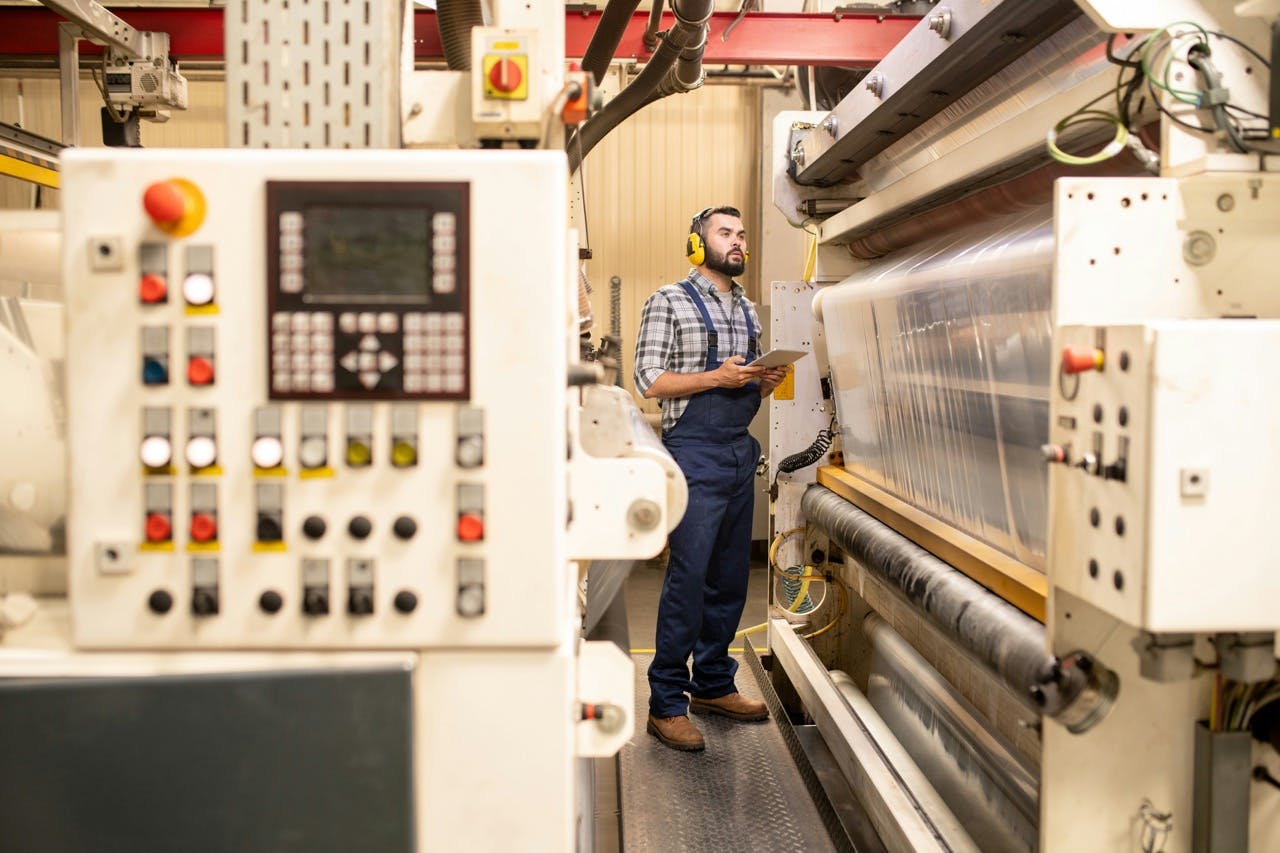How to Escape the Reactive Maintenance Vicious Cycle — For Good
Jun 18, 2025
Predictive Maintenance
Why Most Maintenance Teams Are Stuck
If you're in maintenance or reliability, you already know the cycle. It goes something like this:
A machine fails.
Your team scrambles to fix it.
A temporary repair is made to get production moving again.
A few weeks later — the same machine fails again.
Meanwhile, other work orders stack up.
Your backlog grows.
Morale drops.
So does uptime.
This is the reactive maintenance cycle, and it’s both common and costly.
In many plants — especially in food and beverage, manufacturing, and fast-moving consumer goods — the cycle has become so entrenched it feels like the default. But it doesn't have to be.
At Reliability Academy, this has been called the "Reactive Maintenance Vicious Cycle", and it looks like this:
- Breakdowns → emergency repairs → temporary fixes → repeat failures
- Overworked teams → growing backlogs → skipped PMs
- Budget cuts → even fewer resources → more breakdowns
The good news? You can escape the cycle. And you don’t need a six-figure budget or a year-long change initiative to begin. You just need the right steps — taken consistently.
Below, we’ll walk through the four essential steps to break free, boost uptime, and move towards a proactive, predictive approach that works for your team — not against them.
Step 1: Prioritise Work with Planning & Scheduling
Most maintenance teams run from one emergency to the next. And who can blame them? When a high-speed line or critical chiller goes down, everything stops — and the fire drill begins.
But firefighting isn’t a strategy. It’s a survival tactic.
The first real move toward reliability is to defend time for planned work.
This starts by implementing objective work prioritisation tools like:
- RIME (Ranking Index for Maintenance Expenditure) – Helps you rank work orders by cost and impact
- Risk Assessment Matrix (RAM) – Evaluates urgency and consequence, not just noise
- A basic weekly scheduling system that holds space for proactive tasks
The key is to protect your schedule from being swallowed whole by urgent-but-not-important jobs.
💡 Bonus Tip: If you're still using spreadsheets or whiteboards, it's time to modernise.
Factory AI’s new Prevent CMMS includes built-in intelligence for planning and scheduling — automatically helping teams prioritise work based on risk, urgency, and recurring patterns.
It speeds up triage, reduces administrative load, and ensures that what gets scheduled actually gets done. It’s the kind of tool that makes weekly scheduling feel like second nature — not a weekly battle.
Step 2: Eliminate Repeat Failures (Defect Elimination)
The second step is both simple and incredibly powerful: fix the root cause, not just the symptom.
Many sites spend months (or years) unknowingly burning budget on the same failures happening over and over again. A motor that runs hot. A gearbox that grinds itself into failure. A fan bearing that eats itself every three months.
It’s not just frustrating — it’s expensive.
This is where Defect Elimination (DE) comes in. DE is a structured process that:
- Tracks recurring failures
- Investigates root causes (not just obvious ones like “bearing failure”)
- Implements systemic fixes — lubrication changes, alignment checks, upstream process changes, etc.
- Reviews results to ensure the failure is truly gone
Even without a formal RCA team, frontline staff can start this by keeping a “Repeat Offender” list on the whiteboard — or better yet, inside your CMMS.
🔍 Better yet, use a CMMS that’s designed around defect elimination
With Factory AI Prevent, you can classify failure modes quickly, see recurring problems across sites, and let the system’s AI recommend the best maintenance strategy starting from the failure mode itself.
This is the right way around.
Most CMMS tools force you to start with the task and work backward — a backwards approach that misses the point entirely.
With Prevent, you work from problem to solution — fast. That means less guesswork, and fewer repeat offenders on the floor.
Step 3: Optimise Your PM Program
Let’s be honest: most Preventive Maintenance (PM) programs are built on guesswork.
They were created years ago, inherited from OEM manuals or set arbitrarily ("every 3 months sounds good"). Over time, more tasks are added “just to be safe,” and no one audits them.
The result?
Too many PMs.
Too much time.
Not enough impact.
What’s worse, unnecessary PMs can actually introduce new failure modes. Every time a tech opens a motor or gearbox, there's a chance something will go wrong.
Instead, your PM program should be:
- Purpose-driven: Every task has a clear failure mode it’s trying to prevent
- Efficient: No redundant or overlapping tasks
- Condition-based when possible: PMs that rely on actual machine health, not the calendar
Here’s how to get started:
- Eliminate PMs that add no value
- Substitute static tasks with condition-based checks (e.g. use vibration or temperature data)
- Extend PM intervals if failures don’t justify the frequency
- Reduce task scope if it’s too broad
- Document and standardise tasks so they’re executed properly
This step often frees up 20–30% of maintenance capacity — capacity you can reinvest into defect elimination, training, or condition monitoring.
Step 4: Start Small with Predictive Maintenance
This is the step most teams skip. But it’s where some of the biggest savings — and most satisfying wins — live.
Once you’ve stabilised your workload with scheduling, reduced repeat issues, and trimmed the fat from your PMs, it’s time to go one step further: start collecting data that lets you see failures before they happen.
This is the essence of predictive maintenance (PdM) — using data to detect changes in machine health and intervene before a breakdown.
Let’s put this in context.
In milk and yoghurt production, unplanned downtime can cost $5,000+ per hour, especially when it causes product waste or line contamination. And the root cause? Often a failure that could have been detected days or weeks in advance — if only someone was watching.
That’s where predictive tools come in.
Imagine knowing:
- When a motor bearing begins to misalign
- When a gearbox shows early signs of pitting
- When a pump’s vibration changes just enough to flag potential cavitation
Instead of guessing, you’re measuring.
Instead of reacting, you’re preparing.
Instead of inspecting everything on a schedule, you’re targeting the right work, at the right time.
🧠 Factory AI's predictive solution makes this easy by combining smart sensors with machine learning models. You get alerts that matter — and none of the noise.
Most sites start small: 30 sensors on critical rotating equipment. Then, as confidence grows, they scale.
And with ROI often landing between 3X to 10X in the first year (as shown in cases like Arnott’s and a2 Milk), the business case writes itself.
Putting It All Together: Your Road to Reliability
Here’s the roadmap again, simplified:
- Prioritise Work: Use smart scheduling and tools like Factory AI Prevent to control the chaos
- Eliminate Defects: Focus on root causes, not recurring symptoms — and let AI accelerate the work
- Optimise PMs: Make every task count; eliminate waste
- Start Predictive Maintenance: Use data to get ahead of failures
Each step feeds the next. And you don’t need to wait for perfection before you begin. You just need to begin.
Final Thoughts: It’s a Journey — Not an Event
Escaping reactive maintenance doesn’t happen overnight. But the teams who stick with it — even just one hour a week at first — soon discover something surprising:
Maintenance becomes calm.
Breakdowns become rare.
The team has breathing room again.
As Erik Hupjé, founder of Reliability Academy, puts it:
"You can’t inspect quality into a product, and you can’t schedule your way out of chaos. But you can build reliability — one step at a time."
And when you combine those steps with modern tools like Factory AI Prevent and smart condition monitoring, you build not just a better maintenance department — but a more resilient, profitable business.
Let this be the year you stop firefighting.
And start building the future your plant deserves.
